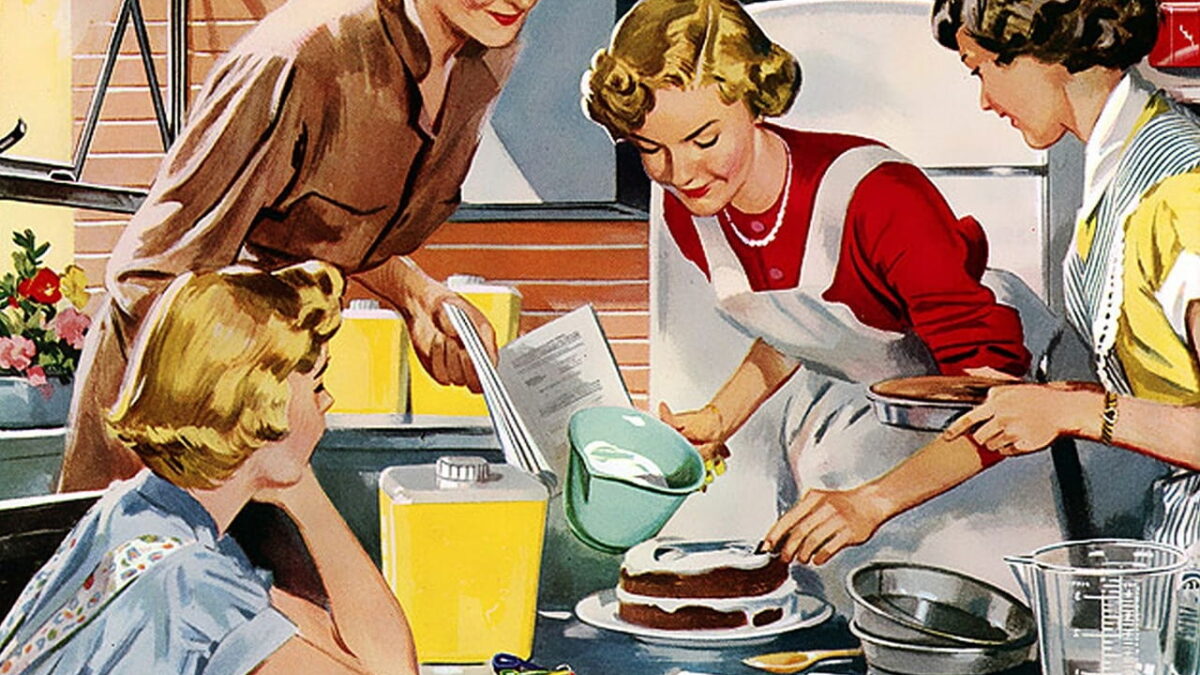The following is an excerpt from the author’s book “Feminism Against Progress,” out April 25.
When we tell the story about women entering the workplace only in terms of progress and equality, implicitly we’re saying that all such non-market activity — whether in private domestic life or non-commercial civic associations — is less important.
So, too, are the forms of human association that happen in those settings — all those aspects of artistic, aesthetic, caring, and relational work that are not visible to the market. And this hierarchy dates to the dawn of the Enlightenment.
In “Emile,” a 1762 treatise on education, the philosopher Jean-Jacques Rousseau set out his vision for the proper education to form young men into ideal liberal subjects.
Young women, meanwhile, should be raised as charming, compliant support humans: “The whole education of women ought to be relative to men. To please them, to be useful to them, to make themselves loved and honored by them, to educate them when young.”
The job of women was to “delight” men and to birth and care for their babies. In other words, the domain of care is a necessary backdrop to the more important business of full personhood but still just that: a backdrop.
The hierarchy Rousseau set out is alive and well. Traditionally speaking, caring has largely been women’s work, and to a great extent it still is. The Organization for Economic Co-operation and Development (OECD) reports that, worldwide, women do between two and 10 times as much unpaid caring work as men.
It is routinely treated as infra dig: anyone who has been a stay-at-home mom knows the moment when someone at a party asks what you do and then politely moves on from talking to you when you tell them.
If you are a working-age adult in this position, chances are you are used to being unreflectingly written off as boring, inadequate, and probably a bit dim.
And this hierarchy of values — economic work good, caring work taken for granted — is everywhere. We underpay workers in caring roles and characterize a loss of earnings due to taking a family career break as a “motherhood penalty” that punishes women, even as it harms the economy by keeping skilled women away from the workplace.
Stay-at-home parents turn up in the statistics under the dismissive term “economically inactive,” as though the defining trait of someone caring for dependents is their lack of measurable contribution to GDP.
At best, caring is “unpaid work:” a poor relative of the economically productive type of work that happens in workplaces and contributes to GDP. Women carry out the lion’s share of this work: 60 percent, according to the ONS.
President Joe Biden expressed this perception of caring work as an impediment, loss, or punishment when he tweeted in November 2021: “Nearly 2 million women in our country have been locked out of the workforce because they have to care for a child or an elderly relative at home.”
The solution, Biden said, was to “make caregiving accessible and affordable and help them get back to work.”
There have long been feminist voices who criticize this dismissal of care. But the history of feminism also includes women challenging the long-standing social norm that care should be women’s work at all.
And it is this social norm’s breakdown and women’s ensuing entry into the workplace that we generally hear narrated today as evidence of progress.
Meanwhile, the loneliness and invisibility I felt as a person mainly engaged in caring for a baby — trundling a baby buggy around the depopulated working-hours streets of my small town — felt no less real for being side effects of that progress.
This conflation of women’s autonomy with feminism and progress — and the associated denigration of care — today forms the core of a well-worn conservative accusation: that the hollowing of civil society, denigration of the family, and numerous associated problems can be laid squarely at the door of the women’s movement.
The conservative American televangelist Pat Robertson famously declared, in a 1992 campaign letter opposing the Equal Rights Amendment, that the feminist agenda “encourages women to leave their husbands, kill their children, practice witchcraft, destroy capitalism and become lesbians.”
More recently, the American anti-feminist academic Scott Yenor argues that the abolition of marriage and the family is a central plank of the feminist pursuit of absolute female autonomy. And if you review second-wave feminist writing (as Yenor does), you can find plenty of arguments that support this.
Germaine Greer, for example, in 1970 depicted women who embraced “feminine” domesticity as “eunuchs,” “castrated,” and cut off from their own authentic desires by malign patriarchal stereotypes.
“Childbearing was never intended by biology as a compensation for neglecting all other forms of fulfillment and achievement,” she argued.
And when contemporary feminists such as Jill Filipovic declare cheerfully that the birth rate is collapsing today because women have more choices, we might wonder: Do the conservatives who blame feminism for the thinning social fabric, hollowed-out families, and collapsing birth rate have a point?
Yes, and no. As I went down the real-world rabbit hole of stay-at-home motherhood and followed my research nose down the historical rabbit hole of its origins, several things became clear.
The story of feminism is one of economic transitions — and particularly of the Industrial Revolution. In seeking to navigate that transition, women wrestled with reproductive asymmetries and the competing calls of individualism and relational bonds.
And seen from this perspective, the version of women’s liberation that has become dominant emerges less as another step up some endless ladder of moral advancement and more as a campaign to enter the market on the same terms as men.
Contra the heartless and antisocial terms in which this campaign is characterized by conservatives, though, there is nothing monolithic about the association between the women’s movement and a rejection of familial ties or social norms.
Rather, the tension between interdependence and freedom has occasioned rich and internally fractious debates among women, complicated too by differences such as class and race.
For much of feminist history, women sought a settlement that valued maternity, care, and interdependence alongside a just measure of economic and political agency and individual freedom. Women were right to seek this — for the pre-industrial cultural legacy combined with industrial-era material conditions together placed women in an invidious position.
For many feminists, then, the aim has historically been a recognition of men and women as physiologically distinct but equal in dignity, interdependent, and capable of excellence. But during the 20th century, the movement took a decisive turn against care and toward individual autonomy.
This happened via another material transition: the arrival into this picture of reproductive technologies that seemed to level previously irreducible differences between the sexes.
With fertility under control, it became possible to imagine that the central asymmetry between the sexes could be eradicated and with it many of the injustices associated with sex dimorphism. But in embracing this dream, the feminist movement adopted a vision of personhood defined in opposition to interdependence and thus settled the feminist debate decisively against care and in favor of autonomy.









